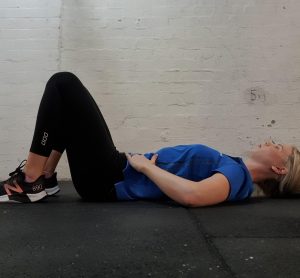Exercise and Pregnancy back pain
Can exercise help pregnancy back pain?
Back pain is very common during pregnancy and can be experienced during any trimester. Longevity Exercise Physiology Drummoyne, Edgecliff, Marrickville, Bella Vista, Randwick, Pymble, Balmain and Neutral Bay discuss the common reasons as to why back pain occurs during pregnancy and how exercise can be used to help manage this pain.
Some likely causes of back pain during pregnancy:
- Increase in weight growing a baby. This puts extra load on the spine and surrounding muscles to support the increase in weight.
- Posture changes. Pregnancy shifts a woman’s centre of gravity and the position of the baby can cause a more anterior tilt of the pelvis. As a result, this can place extra pressure on the lower back.
- Hormone changes. Hormones are released to relax the ligaments in the pelvic area in preparation for birth. Looser ligaments around the spine can lead to instability and pain.
- Stress. Back pain can increase during periods of high stress.
- Standing or sitting for a long time. Try to break up long periods of standing or sitting with some gentle stretches.
Regular exercise is very important to keep the back and surrounding muscles strong to support the growing baby. The type and intensity of exercises that are appropriate will differ greatly for every woman. Exercise Physiologists are trained to help women find strength exercises and stretches that can help relieve and manage back pain.
It’s important to have an Exercise Physiologist supervise exercise to ensure correct movement patterns, breathing and engagement of muscles during movements.
Below are 4 common exercises that can help relieve back pain. These should be performed with the guidance of a health professional.
1. Cat Camel. Resting on hands and knees, gently round your back and tuck your chin. Then let your back arch and extend your head up to the ceiling. Repeat 5-10 times.
2. Pelvic tilts. Performed sitting, standing or lying depending on trimester or preference. Gently draw your belly button to your spine and tuck your hips under. Allow your hips to slightly rotate forward or back to neutral position. Repeat 5-10 times.

3. Seated side stretch. Stretch one arm overhead and lean over as if you are reaching for something. Hold for 10-20 secs each side, breathing normally throughout the stretch. Repeat 2-3 times each side.
4. Glute Bridges. During first trimester glute bridges can be performed to maintain strength of the glutes, hamstrings and lower back. Lying on your back with knees bent, squeeze the glutes and lift the hips up to the ceiling.

If you or someone you know is struggling with back pain during or post pregnancy, Longevity Exercise Physiologists are here to help. Call Longevity Exercise Physiology Edgecliff, Pymble, Marrickville, Randwick, Drummoyne, Balmain, Bella Vista and Neutral Bay on 1300 964 002 to enquire today!

Written By Courtney Maher
References:
Mayo Clinic. (2021, November 20).Pregnancy week by week. Retrieved from Mayo Clinic: https://www.mayoclinic.org/healthy-lifestyle/pregnancy-week-by-week/in-depth/pregnancy/art-20046080
